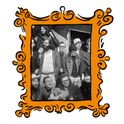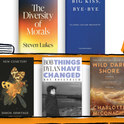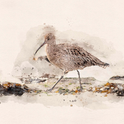In January 1857, at a trial in Paris, the prosecuting counsel shot himself in the foot. He made a stronger case for the defence than did the defence. The defendant was not so much an alleged perpetrator as a book. The book in question was Gustave Flaubert’s Madame Bovary. The book was accused, by virtue of its depiction of adultery, of being an offence to society, to morals, and to religion. It was liable to encourage adultery among wives (the depiction of husbands’ adultery did not seem to pose a similar threat to French civilisation). So much was clear. But there was a point that the prosecutor, almost despite himself, kept returning to: the book was "beautiful." He kept quoting passages from the text and lauding their style, even if the content was deemed to be illegal and obscene.
Madame Bovary and Flaubert were acquitted. Found innocent on account of beauty. Style, henceforth, was officially deemed to outweigh and eclipsemere information about what sometimes goes on in horse drawn-carriages with their curtains closed driving around Rouen and elsewhere. In the same year, Charles Baudelaire’s Les Fleurs du mal was not quite so fortunate and its poems, specifically about lesbians (the original title of the collection was, after all, Les lesbiennes), were banned, thus ensuring their popularity. But the Parnassian movement that grew up around the same time, represented by poets such as Théophile Gautier and Leconte de Lisle, and encapsulated in the resonant phrase, "L’art pour l’art" (which would be taken up by figures as disparate as the art critic Walter Pater, the painter James Whistler and Oscar Wilde), was not exclusively poetic. Or rather, it could be said that prose also became poetic, or became capable of being understood in terms of its form rather than its functionality. Naturalism (the neo-realist literary movement nominally represented by Emile Zola and Guy de Maupassant) morphed into a mystic reverence for purity (as exemplified by Symbolist poet Stéphane Mallarmé).
In 1859 Charles Darwin published his On The Origin of Species. The public prosecutor in Paris, who—gloriously—would himself go on to publish a volume of obscene poems, had presumably given up trying to prohibit books that constituted an offence to religion. But Darwin’s work, which we can now understand as a primordial form of structuralism, offered to do away with the Author altogether. The concept of a Creator was strictly de trop. The internal mechanisms of Nature were now seen as being sufficient to explain natural phenomena. Recourse to an external agent provocateur was unnecessary. Or to put it in a Derridean-inflected Darwinian way, there was nothing beyond the book of Nature. God was redundant, out of a job.
But, such is our theological tendency—and it is surely this that has drawn thinkers such as Pierre Bourdieu, Jean-Paul Sartre, and Roland Barthes to precisely this conjunction—the death of God created a vacuum that was bound to be filled by something. Art seemed like a good option. Hence the Parnassian. Hence Flaubert, and days spent searching for the right, the perfect, adjective. And so we find ourselves, fast-forwarding to the 21st century, still in the grip of what Walter Benjamin, in his essay on The Work of Art in the Age of Mechanical Reproduction, called a “theology of art” (which he also associated with fascism). We seek the perfect, we disdain what we judge to be the imperfect. The greatest books attain the condition of music, the rest are just noise in the airport lounge. This is not so much a political distinction between bourgeoisie and proletariat (shall we say, Donna Tartt or Jonathan Franzen vs Karin Slaughter or Lee Child), but rather a fundamentalist demand for a hierarchy governing sacred and secular. One of its most obvious manifestations is what can reasonably be thought of as intellectual snobbery, the kind that automatically prizes literary over commercial fiction. But I would like to call this attitude "comparativism."
It is easy to see the contrast between the late nineteenth-century mentality, that came to be known as "decadence," epitomised in Axël’s "As for living, we shall let our servants do that for us" (in Villiers de l’Isle Adam’s eponymous drama) and the critical enthusiasms of Samuel Johnson, as expressed in James Boswell’s Life of Johnson, in the middle of the eighteenth century. Johnson was a conservative theologian as well as critic, and although he thought well or ill of various books was never tempted to elevate them to a position already fully occupied, to his way of thinking, by a broadly benevolent if mysterious God. And at the same time he was capable of asserting that any man who was tired of London was tired of life. He liked to go to the pub and down a pint with Boswell. He felt no need to delegate mere living.
The death of God recorded by Friedrich Nietzsche in 1882 inevitably generated an alternative religion of, among other things, the novel. The decline in religious piety produced Thomas Hardy and DH Lawrence and Martin Amis. And Ernest Hemingway and Norman Mailer. And possibly JK Rowling. I think this much is clear.
But comparativism did not begin in the middle of the nineteenth century. It spiked with the relatively recent rise of the written, the passage from hieroglyphs through cuneiform to alphabets. The possibility of the sacred text gave rise to monotheism, the belief that gods, plural, were dead. The commandments had to be inscribed on tablets of stone. There is no Christianity without the Bible (the original Hebrew scrolls were carried around in an Ark), just as there is no Islam without the Qu’ran. And it is comparativism that is at the core of monotheism.
It must seem to anyone reading the Bible today that antithesis is the dominant rhetorical mode: from heaven and earth through Adam and Eve to Cain and Abel and beyond. Underpinning this architecture is a concern for an impossible purity in counterpoint to unhealthy pollution. It seems likely that the religious impulse arises out of a concern with personal hygiene. As Mary Douglas argues in Purity and Danger: An Analysis of Concepts of Pollution and Taboo, “dirt is disorder.”
But religion cannot achieve lift-off on the basis of a binary logic alone. Computers cannot invent God. As Jung suggests, three not two is the sacred number. We need not good and evil, but rather good, better, and best. There has to be scope for a superlative. Hence we have the holy Trinity and Dante’s inferno, purgatorio, and paradiso. The transcendent equates precisely to transcending the binary.
Spinoza, in his Ethics (1677), elegantly summarizes the thinking. Just as, in mathematics, we have perfect circles and triangles, by comparison with which our own actual efforts are pathetically inadequate, so too there must be a being who is perfect in the same way as geometry is. The perfect, he argues, exists by definition. The perfect is equivalent to God. God, in other words, is an overflow of comparativism. It is there, by implication, in the Book of Genesis. If human beings can have "dominion over the fish of the sea" and creeping things that creepeth upon the earth, then, in turn, another being must have dominion over them.
So it was not the end of religion that gave rise to aesthetics in 1857 and beyond, as might readily be assumed, but rather aesthetics that gave rise to religion in the first place. It was, so to speak, the literary reviewer who invented monotheism: if this is better than that then there has to be a best.
As Nietzsche also argued, we shall never get rid of God. Or the Author. Or comparativism. I find lingering echoes of Genesis still in the works of Lee Child and the enhanced XXL saviour figure of Jack Reacher, who achieves justice without ever quite (yet) being crucified.
When art and religion meet
We have an early form of aestheticism to thank for the rise of religion
August 17, 2016












